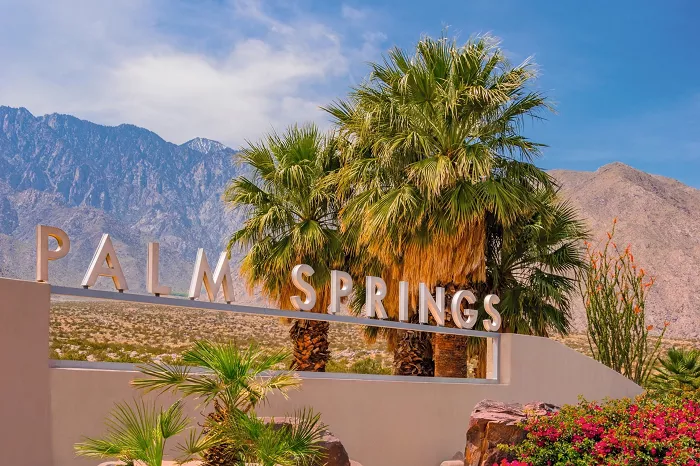Palm Springs, located in southern California’s Coachella Valley, has a rich history that predates its official incorporation as a city. The area has evolved from indigenous settlements to a renowned desert resort, attracting visitors worldwide.
Indigenous Beginnings: The Cahuilla People
Long before European settlers arrived, the Agua Caliente Band of Cahuilla Indians inhabited the Palm Springs area. They lived in the region for thousands of years, utilizing the natural resources provided by the desert landscape. The Cahuilla people referred to the area as “Se-Khi,” meaning “boiling water,” due to the presence of natural hot springs.
Early European Exploration
The first recorded European contact occurred in the 1770s when Spanish explorers traversed the region. They named the area “La Palma de la Mano de Dios,” translating to “The Palm of God’s Hand.” In December 1823, Mexican explorers José María Estudillo and Brevet Captain José Romero documented the existence of “Agua Caliente,” highlighting the area’s hot springs.
Settlement and Development in the Late 19th Century
By 1872, Palm Springs had become a stagecoach stop between Prescott, Arizona, and Los Angeles, California. In 1884, Judge John Guthrie McCallum established the Palm Valley Colony on the site, aiming to create a model desert resort. McCallum’s efforts included constructing an irrigation system to support agriculture, although challenges like droughts and floods hindered long-term success.
Emergence as a Health Resort
In the early 1900s, Palm Springs gained recognition as a health resort. The dry, warm climate attracted individuals seeking relief from respiratory ailments, particularly tuberculosis. Nellie Coffman, a notable figure during this period, established The Desert Inn in the second decade of the 1900s. Initially operating as a sanitarium, it evolved into a central hub of social life, contributing significantly to the area’s development as a tourist destination.
Hollywood’s Playground in the 1930s
The 1930s marked a transformative era for Palm Springs as it became a favored retreat for Hollywood celebrities. The city’s proximity to Los Angeles made it an ideal getaway, offering privacy and a pleasant climate. Establishments like The Racquet Club, opened in 1934 by actors Charles Farrell and Ralph Bellamy, attracted numerous stars, solidifying Palm Springs’ reputation as “Hollywood’s Playground.”
Official Incorporation in 1938
Palm Springs was officially incorporated as a city in 1938. This milestone marked the transition from a “village” to a “city,” paving the way for further development and governance. The incorporation allowed for structured planning and the establishment of essential services, supporting the growing population and tourism industry.
Architectural Significance and Modernism
The mid-20th century saw Palm Springs emerge as a hub for modernist architecture. Architects such as Richard Neutra and Albert Frey designed sleek, minimalist structures that harmonized with the desert environment. This architectural movement contributed to the city’s unique aesthetic and continues to attract enthusiasts worldwide.
Cultural and Recreational Developments
Over the decades, Palm Springs expanded its cultural and recreational offerings. The establishment of venues like the Palm Springs Art Museum and annual events such as the Palm Springs International Film Festival have enriched the city’s cultural landscape. Additionally, the abundance of golf courses, hiking trails, and spa resorts has solidified its status as a premier leisure destination.
Recent Developments and Recognition
In recent years, Palm Springs has continued to evolve while honoring its rich history. The relocation and restoration of the Aluminaire House, an iconic example of functional Modernist architecture, exemplify the city’s commitment to preserving its architectural heritage. Originally displayed in New York in 1931, the Aluminaire House faced challenges before finding a permanent home in Palm Springs, where it now serves as a museum exhibit.
Conclusion
From its origins as the homeland of the Agua Caliente Band of Cahuilla Indians to its official incorporation in 1938 and subsequent development into a world-renowned resort city, Palm Springs boasts a rich and diverse history. The city’s evolution reflects a blend of cultural influences, architectural innovation, and a commitment to preserving its unique character, ensuring its enduring appeal for generations to come.

